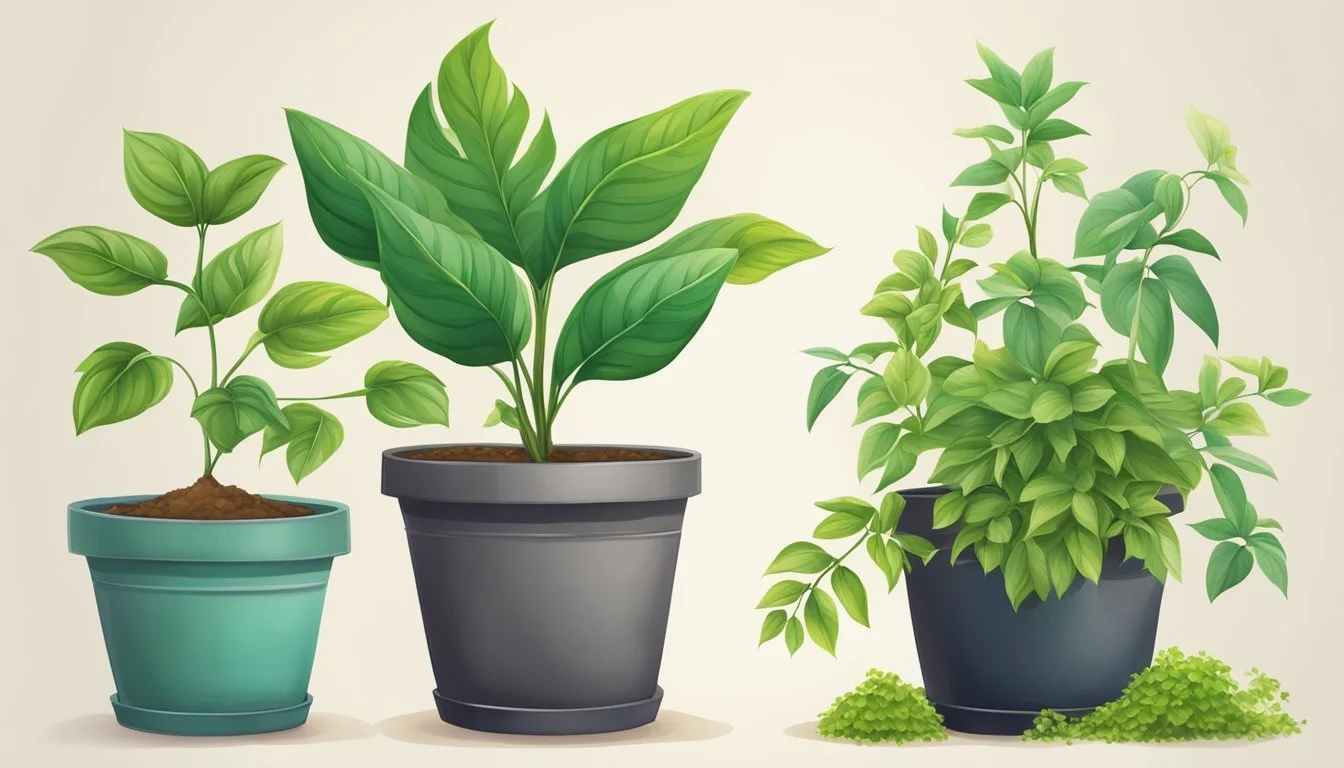Is Your Relationship Toxic? Take This Essential Toxic Relationship Test
Toxic relationships can be difficult to recognize when you're in the midst of one. Many people find themselves questioning whether their partnership is healthy or harmful. A toxic relationship test can provide valuable insights into relationship dynamics and patterns.
These quizzes typically ask questions about communication, trust, respect, and overall relationship satisfaction to help individuals assess the health of their connection. While not definitive, these tests can serve as a starting point for self-reflection and discussion with a partner or therapist.
Taking a toxic relationship quiz can be an important step in understanding one's current situation. It may reveal areas that need improvement or confirm suspicions about problematic behaviors. Armed with this knowledge, individuals can make informed decisions about their relationships and seek appropriate support if needed.
Understanding Toxic Relationships
Toxic relationships can have severe negative impacts on mental health and well-being. Recognizing the signs and patterns of toxicity is crucial for maintaining healthy connections.
Definition of a Toxic Relationship
A toxic relationship is characterized by persistent negative behaviors that harm one or both partners emotionally, mentally, or physically. These relationships often lack mutual respect, trust, and support.
Toxic partnerships can occur between romantic partners, friends, family members, or colleagues. They typically involve a power imbalance, with one person exerting control over the other.
Common Characteristics of Toxic Relationships
Lack of respect: Partners consistently disregard each other's feelings, boundaries, or needs.
Poor communication: Discussions often lead to arguments, misunderstandings, or silent treatment.
Controlling behavior: One partner may attempt to dictate the other's choices, friendships, or activities.
Jealousy and possessiveness: Excessive monitoring of the partner's interactions or accusations of infidelity.
Constant criticism: Frequent put-downs, insults, or belittling comments.
Lack of support: Partners fail to encourage each other's goals or personal growth.
Patterns of Toxic Behavior
Toxic relationships often follow predictable patterns:
Cycle of abuse: Tension building, incident, reconciliation, calm.
Gaslighting: Manipulating someone to doubt their own perceptions or memories.
Emotional blackmail: Using fear, obligation, or guilt to control the partner.
Stonewalling: Refusing to communicate or engage in conflict resolution.
Hot and cold behavior: Alternating between affection and coldness to keep the partner off-balance.
These patterns can create a sense of confusion and instability in the relationship. Partners may feel trapped in a cycle of hope and disappointment.
Recognizing these toxic behaviors is the first step towards addressing them or seeking help to leave an unhealthy relationship.
Self-Assessment for Toxicity
Evaluating one's own role in relationships is crucial for personal growth and fostering healthier connections. Self-assessment involves examining behaviors, past experiences, and emotional needs to identify potential toxic patterns.
Recognizing Your Own Behavior
Self-awareness is key to identifying toxic traits. Individuals should reflect on their communication style, emotional responses, and actions in relationships. A quiz can help pinpoint specific behaviors that may be harmful.
Common toxic behaviors include:
Constant criticism
Manipulation
Excessive jealousy
Lack of empathy
It's important to consider how these behaviors impact others. Recognizing patterns is the first step towards change.
Reflecting on Past Relationships
Examining past relationships can reveal recurring issues. This introspection helps identify patterns of toxicity that may have gone unnoticed.
Key questions to consider:
Were there frequent conflicts?
Did you feel respected and valued?
Was there a balance of give and take?
Analyzing these aspects can provide insights into personal relationship dynamics. It's essential to be honest about both positive and negative experiences.
Identifying Your Emotional Needs
Understanding one's emotional needs is crucial for maintaining healthy relationships. This awareness helps set boundaries and communicate effectively.
Common emotional needs include:
Feeling appreciated
Having personal space
Receiving affection
Being heard and understood
A self-assessment quiz can help clarify these needs. Recognizing unfulfilled emotional needs can prevent resentment and toxicity in future relationships.
Communication and Disagreement
Effective communication and handling disagreements are crucial aspects of healthy relationships. How couples navigate these areas can reveal whether their dynamic is nurturing or toxic.
Healthy vs. Toxic Communication
Healthy communication involves active listening, empathy, and respect. Partners express themselves openly without fear of judgment. They validate each other's feelings and seek to understand different perspectives.
Toxic communication patterns include stonewalling, criticism, defensiveness, and contempt. One partner may dominate conversations or dismiss the other's concerns. Verbal abuse, name-calling, and threats have no place in healthy dialogues.
Couples with strong communication skills discuss issues calmly and productively. They focus on finding solutions rather than assigning blame.
Navigating Disagreements
Conflict is normal in relationships, but how it's managed matters. Healthy couples approach disagreements as a team, working together to find compromise.
They:
Stay focused on the issue at hand
Use "I" statements to express feelings
Take breaks if emotions run high
Avoid bringing up past grievances
Toxic behavior during disagreements includes:
Refusing to engage in discussion
Making personal attacks
Threatening to end the relationship
Using guilt or manipulation tactics
Successful conflict resolution requires patience, understanding, and a willingness to find middle ground.
Signs of Manipulative Communication
Manipulation in relationships often manifests through subtle communication tactics. Recognizing these signs is crucial for maintaining healthy boundaries.
Common manipulative behaviors include:
Gaslighting (denying or distorting reality)
Silent treatment as punishment
Playing the victim to avoid responsibility
Using guilt trips to control behavior
Honest communication forms the foundation of trust. Manipulators may twist facts, make false promises, or withhold information to maintain power.
Red flags include feeling confused after conversations, doubting one's own perceptions, or walking on eggshells to avoid upsetting a partner. Healthy relationships prioritize transparency and mutual respect in all interactions.
Signs and Symptoms of Toxicity
Toxic relationships exhibit distinct patterns of behavior that can severely impact an individual's wellbeing. Recognizing these signs is crucial for maintaining healthy connections and protecting one's mental health.
Physical and Emotional Signs
Constant stress and anxiety often accompany toxic relationships. Individuals may experience physical symptoms like headaches, stomach issues, or sleep disturbances. Emotional signs include feeling drained, on edge, or walking on eggshells around their partner.
Frequent arguments and criticism can lead to low self-esteem and self-doubt. The toxic partner may use manipulation tactics such as gaslighting or silent treatment, causing confusion and emotional instability.
Lack of respect for boundaries is another red flag. This can manifest as excessive jealousy, controlling behavior, or disregard for personal space and privacy.
Psychological Impact of Toxicity
Toxic relationships can significantly affect mental health. Depression and anxiety are common outcomes, stemming from persistent negativity and emotional abuse.
Individuals may develop trust issues and struggle with forming healthy relationships in the future. The constant state of stress can lead to hypervigilance and difficulty relaxing, even in safe environments.
Self-blame is a frequent psychological consequence. Victims often internalize criticism and begin to doubt their own perceptions and worth. This can result in a loss of identity and increased dependence on the toxic partner.
Consequences of Long-Term Exposure
Prolonged exposure to toxic relationships can have severe long-term effects. Chronic stress may lead to physical health problems such as cardiovascular issues or weakened immune function.
Emotional scars can persist long after the relationship ends. Survivors may struggle with PTSD-like symptoms, including flashbacks and intrusive thoughts. Rebuilding self-esteem and learning to trust again can be challenging processes.
Career and social life often suffer as well. Toxic relationships can isolate individuals from friends and family, and impact work performance. Financial abuse or manipulation may also leave lasting economic consequences.
Addressing Toxicity in Relationships
Recognizing and addressing toxic behaviors is crucial for improving relationship dynamics. Taking action requires courage, self-reflection, and often professional guidance to navigate complex emotions and patterns.
Approaches to Confronting Toxicity
Confronting toxicity starts with honest communication. Choose a calm moment to express concerns using "I" statements that focus on feelings rather than blame. Be specific about problematic behaviors and their impact.
Listen actively to your partner's perspective. Avoid becoming defensive or escalating the situation. Seek common ground and discuss potential solutions together.
Consider writing down key points beforehand to stay focused during difficult conversations. Take breaks if emotions run high, and revisit the discussion when both parties are calm.
Setting Boundaries
Establishing clear boundaries is essential in addressing toxic relationship patterns. Identify your limits and communicate them assertively. Be specific about acceptable and unacceptable behaviors.
Examples of boundaries:
"I need time alone when I come home from work."
"Please don't criticize my appearance."
"I won't tolerate name-calling during arguments."
Enforce boundaries consistently. If they're crossed, calmly restate your position and implement agreed-upon consequences. Remember, healthy boundaries protect both partners and foster mutual respect.
Seeking Professional Help
A trained therapist can provide invaluable support in addressing relationship toxicity. They offer a neutral perspective and teach effective communication skills. Couples therapy creates a safe space to explore underlying issues and develop healthier patterns.
Individual therapy can also be beneficial. It helps each partner work on personal growth and understand their role in toxic dynamics. Look for therapists specializing in relationship issues or trauma if relevant.
Support groups offer additional resources and community for those dealing with toxic relationships. They provide validation and practical coping strategies from others with similar experiences.
Moving Forward After a Toxic Relationship
Healing from a toxic relationship takes time and self-compassion. Focus on rebuilding self-esteem and rediscovering personal interests and goals. Reconnect with supportive friends and family members.
Practice self-care through activities like exercise, meditation, or journaling. These help process emotions and reduce stress. Consider learning new skills or hobbies to boost confidence and create positive experiences.
Reflect on lessons learned from the toxic relationship. Identify red flags to watch for in future partnerships. Work on developing healthy relationship skills, such as assertiveness and emotional intelligence.
Be patient with the healing process. It's normal to have setbacks or conflicting emotions. Celebrate small victories and progress along the way to a healthier, more fulfilling life.


